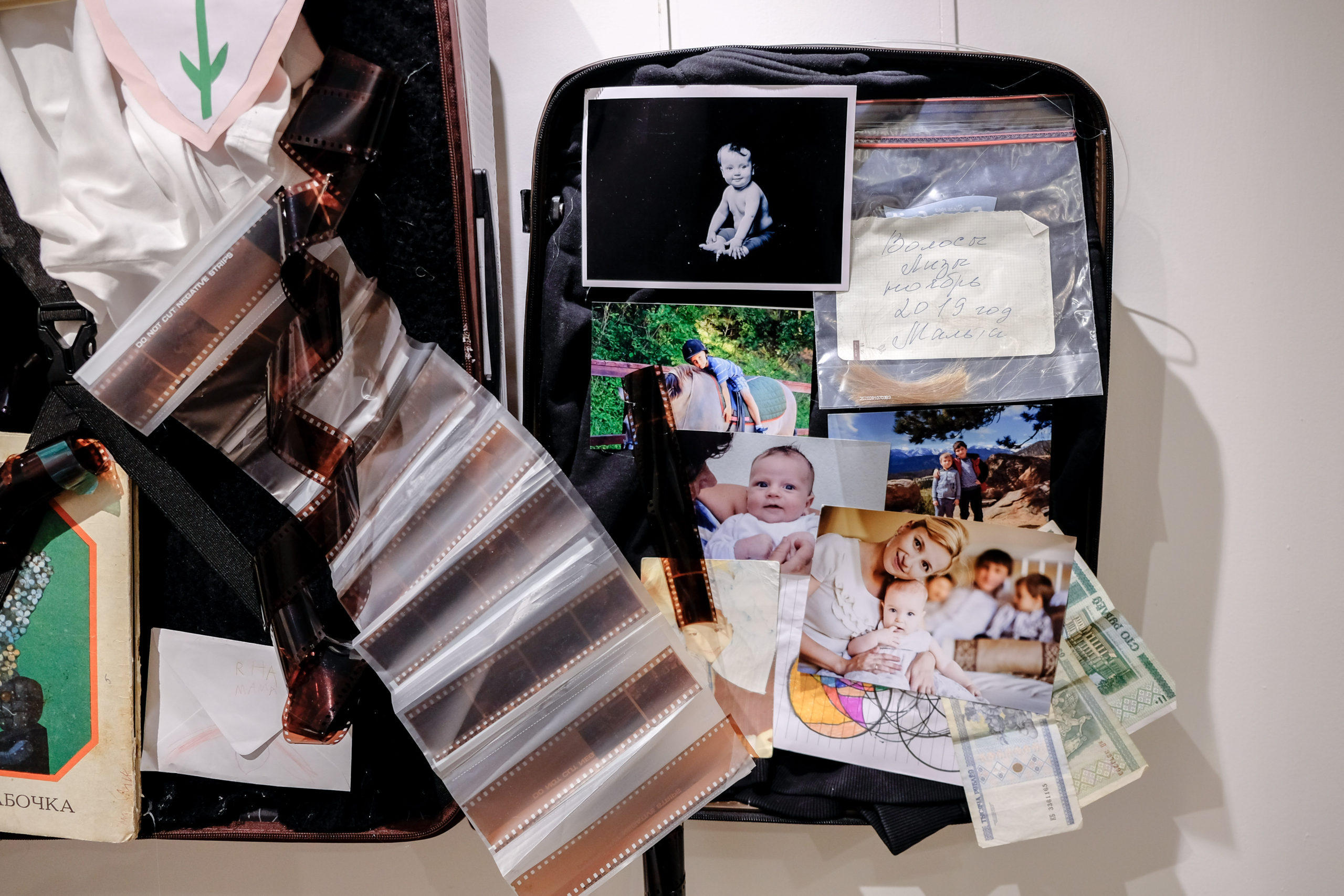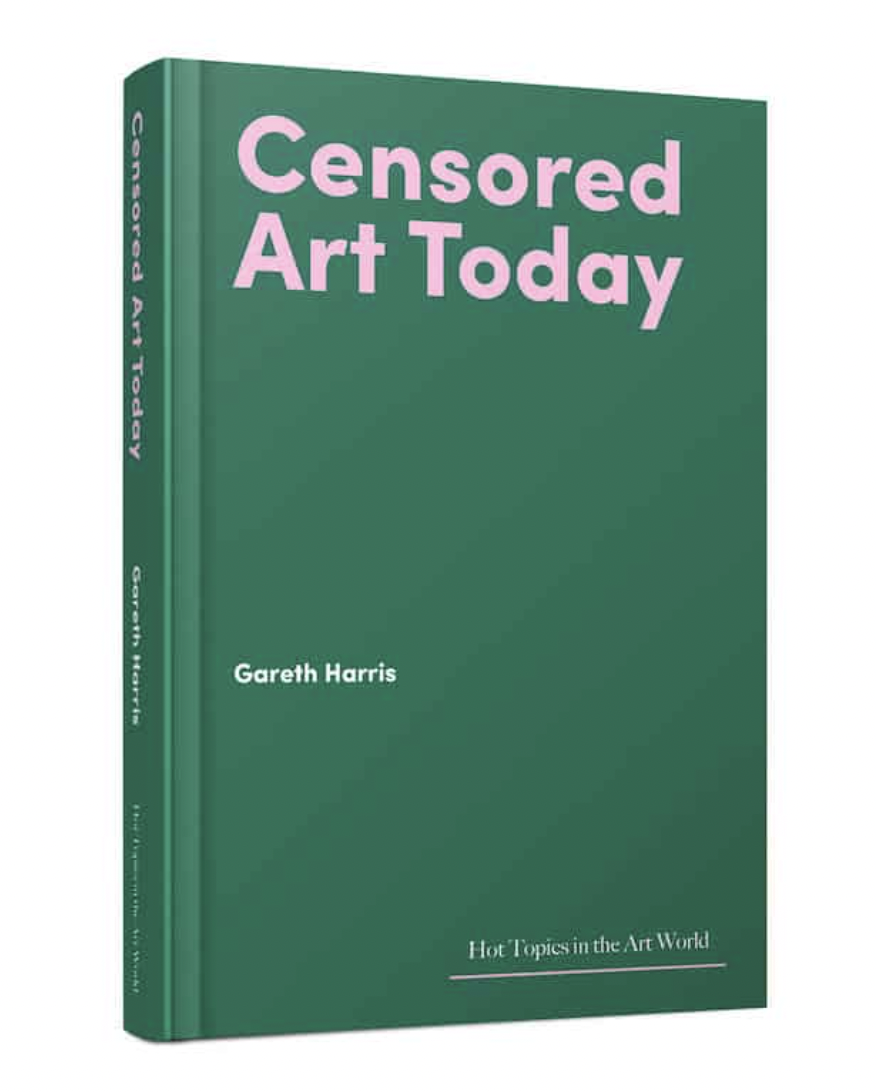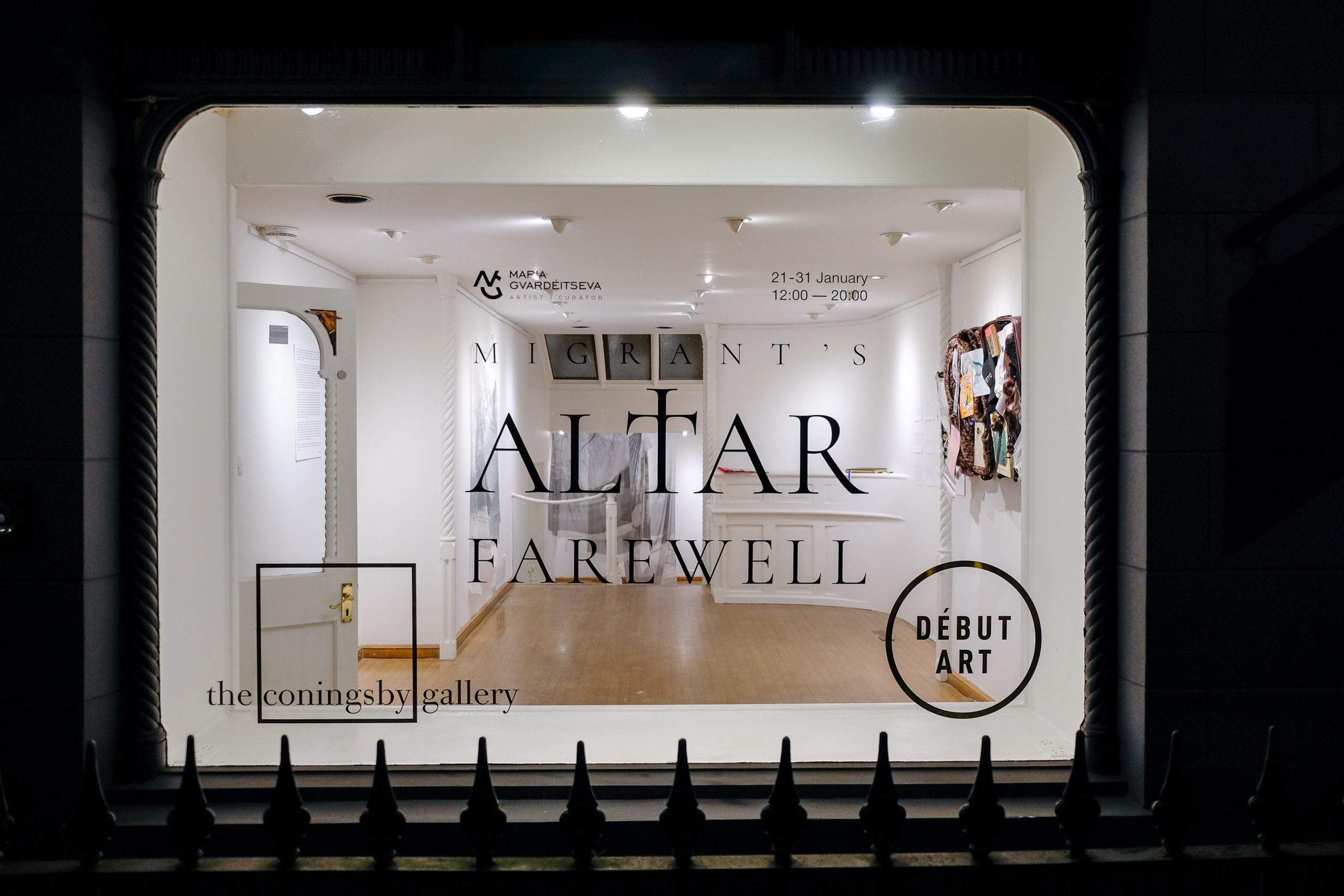In late January, London’s Coningsby Gallery featured the exhibition “Migrant’s Altar. Farewell” by the contemporary multi-disciplinary artist and artivist from Belarus Maria Gvardeitseva. The exhibition became a strong and resonating statement of the artist, concerning the range of topics that are beyond “nice” and “decorative” in art and society. In this dramatic emotional immersion through powerful art pieces, Maria Gvardeitseva raised topics of self-identification, civil expression, women’s perspectives, and immigration issues. The artist showed intimate treasures traveling with her in a search for a homeland, like thousands of exiles all over the world today.
Artivism: A Message to the World from the Artist
The Home is always filled with memories and “firsts”: the first perception of the universe we live in, the first language we speak, and the begging of our self-identification. The path of the eternal wanderer, immigrant, and refugee, in search of their beginning, roots, new homeland, and truth… In the first part of “Migrant’s Altar. Farewell,” Maria Gvardeitseva displayed her own “memory box” as two suitcases filled with objects she took with her when leaving Belarus forever. The suitcases were torn into two pieces and displayed in the form of an altar containing the artist’s relics. The central installation was supported by a performative video piece: it shows how Maria melancholically burns her Belarusian passport in the forest right next to the Belarusian border. The context of the installation was complemented by suspended transparent canvases with blurry old photos of Minsk printed on them, just as memories from “long-long ago.” The exposition was continued with a strong piece titled “Anatomy of citizenship,” an installation of four jars containing different parts of Maria’s Belarusian passport to treat the essence of “autonomy,” “state,” and “agency” in the way they determine her as a person and as an artist. Gvardeitseva applied the mechanism of separation and dividing used in anatomical research. The artist isolated and studied each element apart to reach the limits of state and national belonging in an individual’s identity.
Maria Gvardeitseva is a unique example of the combination of an artivist and a multi-disciplinary visual artist. Artivism, or artistic activism, has the special power to send global messages resonating with people around the world. As one of the most influential art practices of the twenty-first century, artivism is the center of attraction for many online art platforms that provide information about artivists all over the world. Art in Protest promotes artists who embody the spirit of creativity and dissent and whose art is connected to their countries’ struggle for democracy and basic human rights. Artivist galleries support planetary improvement and artists who are committed to change. The Artivist Network focuses specifically on climate justice organizing for its power as an intersectional platform to unite diverse movements.
The rise of interest in acute art from researchers and collectors aroused the emergence of educational programs in this direction. Maria Gvardeitseva herself studies MA Art & Politics at Goldsmiths, University of London. In the interview for TAtchers’ Art Management, she said, “At a certain stage I realized that I didn’t want to be a self-taught artist and I needed to conceptualize my artistic practices more.” Thematically related BA program Global Arts, Culture and Politics at the University of Amsterdam offers students the opportunity to study the greatest challenges facing contemporary society, from climate change to social inequality, through the lens of culture, politics, and the arts. MA in Arts Politics at NYU Tisch School of the Arts provides a one-of-a-kind encounter with activists, artists, theorists, and curators from diverse disciplines and interests.
Exploring of connections between art and politics and art’s potential in times of crisis became one of the most important problems today. Artivism is everywhere, from scientific editions to newspaper pages. Censored Art Today by Gareth Harris is an accessible, informed analysis of the debates raging around censorship of art and so-called ‘cancel culture.’ In the book Artivism: The Battle for Museums in the Era of Postmodernism, British art critic Alexander Adams examines the origins, aims, and spread of artivism. In the edition Artivism, the authors Arcadi Poch & Daniela Poch present the new Creative Activism as creativity committed to reflection, criticism, and the eternal pursuit of social justice.
Artivism is supported by international foundations. The Artivist Foundation amplifies the voices of activist artists by connecting them with local and global communities. The Bertha Artivism Awards is an opportunity for activist artists, art collectives, and organizations around the world to use the arts as a Call to Action.
Maria Gvardeitseva summarized, “I really like the quote of Wim Wenders who said that ‘the most political decision you make is where you direct people’s eyes. In other words, what you show people, day in and day out, is political…And the most politically indoctrinating thing you can do to a human being is to show him, every day, that there can be no change’. Artistic practices — no matter whether they come from consciousness or subconscious — do actually consistently prove that change is possible. History has been consistently showcasing to us that activism, the fight for democracy and autonomy, can be so powerful when artists are in charge.”




